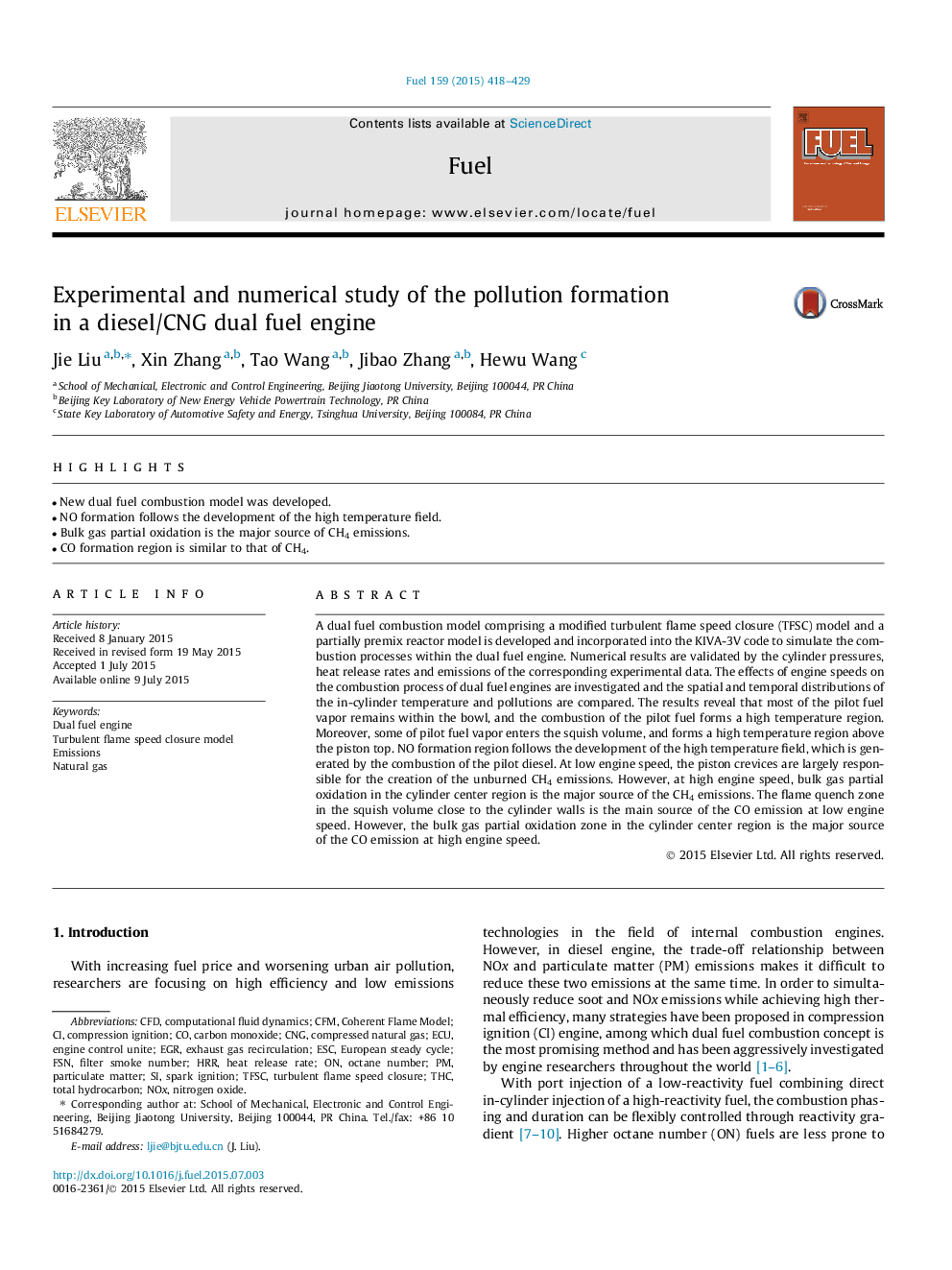| کد مقاله | کد نشریه | سال انتشار | مقاله انگلیسی | نسخه تمام متن |
|---|---|---|---|---|
| 6634653 | 461116 | 2015 | 12 صفحه PDF | دانلود رایگان |
عنوان انگلیسی مقاله ISI
Experimental and numerical study of the pollution formation in a diesel/CNG dual fuel engine
دانلود مقاله + سفارش ترجمه
دانلود مقاله ISI انگلیسی
رایگان برای ایرانیان
کلمات کلیدی
EGRECUTHCHRRFSNCFMCNGTFSCCoherent Flame ModelNOx - NOXcompression ignition - احتراق فشرده سازیEmissions - انتشاراتnitrogen oxide - اکسید نیتروژنOctane number - تعداد اکتانspark ignition - جرقه جرقهESC - خروجCFD - دینامیک سیالاتComputational fluid dynamics - دینامیک سیالات محاسباتیparticulate matter - ذرات معلقFilter Smoke Number - شماره دود فیلترcarbon monoxide - منوکسیدکربنDual fuel engine - موتور سوخت دوگانهHeat release rate - نرخ انتقال حرارتtotal hydrocarbon - کل هیدروکربنNatural gas - گاز طبیعی compressed natural gas - گاز طبیعی فشردهexhaust gas recirculation - گردش بازگشتی گاز اگزوز
موضوعات مرتبط
مهندسی و علوم پایه
مهندسی شیمی
مهندسی شیمی (عمومی)
پیش نمایش صفحه اول مقاله

چکیده انگلیسی
A dual fuel combustion model comprising a modified turbulent flame speed closure (TFSC) model and a partially premix reactor model is developed and incorporated into the KIVA-3V code to simulate the combustion processes within the dual fuel engine. Numerical results are validated by the cylinder pressures, heat release rates and emissions of the corresponding experimental data. The effects of engine speeds on the combustion process of dual fuel engines are investigated and the spatial and temporal distributions of the in-cylinder temperature and pollutions are compared. The results reveal that most of the pilot fuel vapor remains within the bowl, and the combustion of the pilot fuel forms a high temperature region. Moreover, some of pilot fuel vapor enters the squish volume, and forms a high temperature region above the piston top. NO formation region follows the development of the high temperature field, which is generated by the combustion of the pilot diesel. At low engine speed, the piston crevices are largely responsible for the creation of the unburned CH4 emissions. However, at high engine speed, bulk gas partial oxidation in the cylinder center region is the major source of the CH4 emissions. The flame quench zone in the squish volume close to the cylinder walls is the main source of the CO emission at low engine speed. However, the bulk gas partial oxidation zone in the cylinder center region is the major source of the CO emission at high engine speed.
ناشر
Database: Elsevier - ScienceDirect (ساینس دایرکت)
Journal: Fuel - Volume 159, 1 November 2015, Pages 418-429
Journal: Fuel - Volume 159, 1 November 2015, Pages 418-429
نویسندگان
Jie Liu, Xin Zhang, Tao Wang, Jibao Zhang, Hewu Wang,